Symptoms of a Torn Arm Muscle
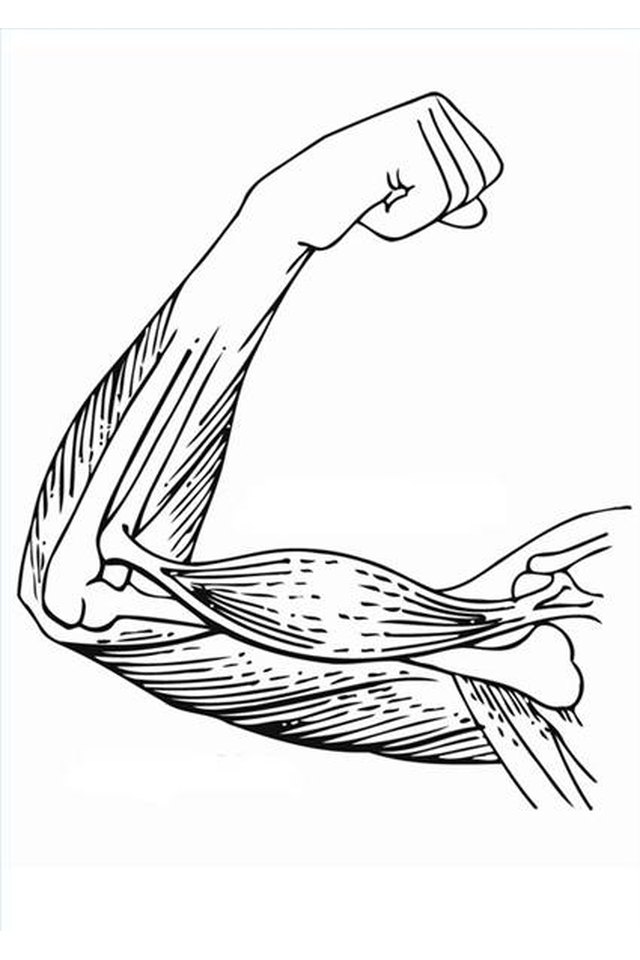
If you have ever exercised, chances are there have been pulled muscles along the way. Arm muscles are very susceptible to being pulled or torn since every activity revolves around that area of the body. Most of the injuries involving a torn arm muscle occur around the tendons where there is the most strain. In addition, torn arm muscles can occur from a single event like a sports activity or from constant strain such as weight lifting. There are two major muscles in the arm: Biceps and Triceps. The bicep is located on the top of the arm, and this muscle often gets the brunt of the workout. Triceps are behind the arm, located between the elbow and shoulder. Many individuals will work out both of these muscle groups to get toned or muscular arms with strength exercises such as a bicep curl or triceps dip. Using weights to strengthen these muscles increases the chances of tearing because of the strain that is put on the muscles in the contraction movements.
Causes
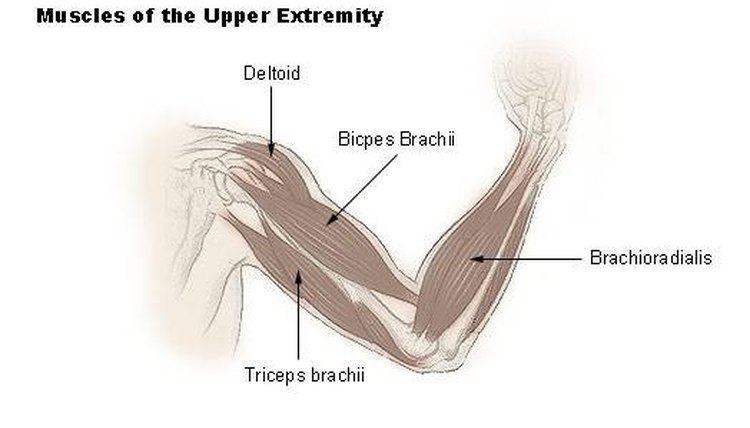
http://www.edupics.com/arm-muscles-t12897.jpg, http://www.gymaddix.com/wp-content/uploads/2009/04/weight-lifting-light-276x300.jpg
Understand what could cause a torn arm muscle, and be able to identify the symptoms. During a workout, stress on the bicep or tricep muscles can cause a tear especially if there is too much weight being used. Immediate symptoms of a torn bicep muscle include sharp or intense pain, burning and weakness in the muscle. Tricep tears have the same symptoms, as well as muscle swelling, bruising and intense pain. Not all torn muscles are extreme, some can be painful but mild and rest is needed in order to heal. Other tears are severe enough to require medical attention to repair.
Exercises
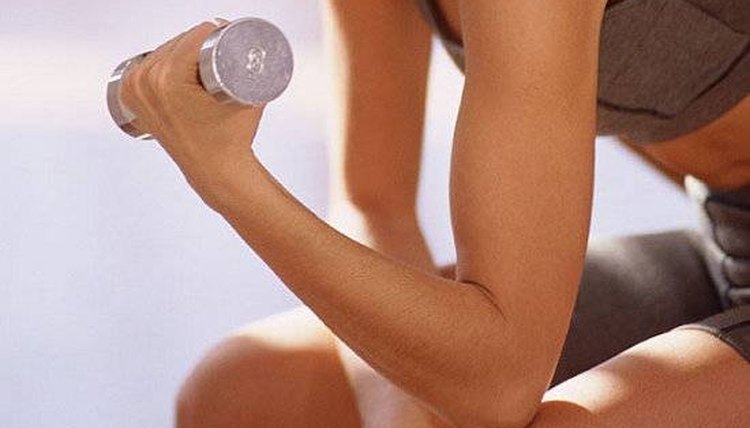
http://www.edupics.com/arm-muscles-t12897.jpg, http://www.gymaddix.com/wp-content/uploads/2009/04/weight-lifting-light-276x300.jpg
Stretch the muscles to prevent a torn arm muscle. With bicep muscles, tears usually occur when the bicep is completely extended during an arm curl. Many times individuals will train with an extreme amount of weight, which puts a strain on the muscle, causing it to tear. Bicep curls are mostly to blame for tears when a weight trainer uses too much weight and does not stretch properly prior to activity. Tricep tears are caused the same way, when there is too much weight or pressure applied to the muscle. Some individuals will hear a muscle pop when it tears, followed by pain and swelling in the area.
Rehabilitation
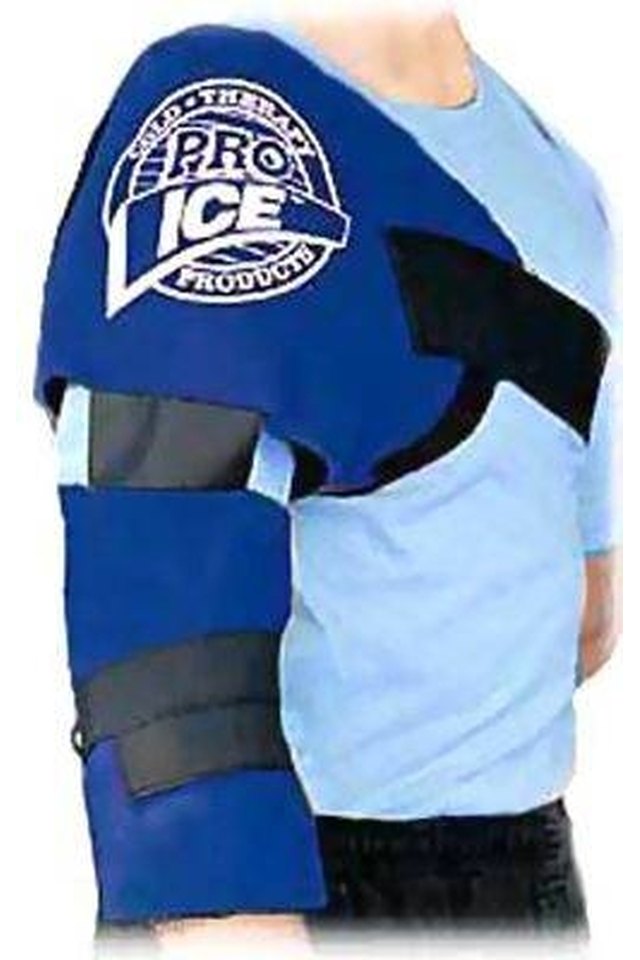
http://www.edupics.com/arm-muscles-t12897.jpg, http://www.gymaddix.com/wp-content/uploads/2009/04/weight-lifting-light-276x300.jpg
Rest the muscle in the event of a tear. In the event of a mild bicep tear, physical therapy can help heal it and restore the range of motion to the muscle. For more severe tears, surgery might be the only option to repair it fully. Tricep tears can often heal on their own with the help of anti-inflammatory pain relievers, icy hot muscle relief gels and rest. In extreme cases, tricep tears can be severe enough to require surgery so visit a doctor if the pain does not subside. Individuals will feel the symptoms of a torn arm muscle immediately, so it is important to see a doctor to get treatment either at home or professionally.
Prevention
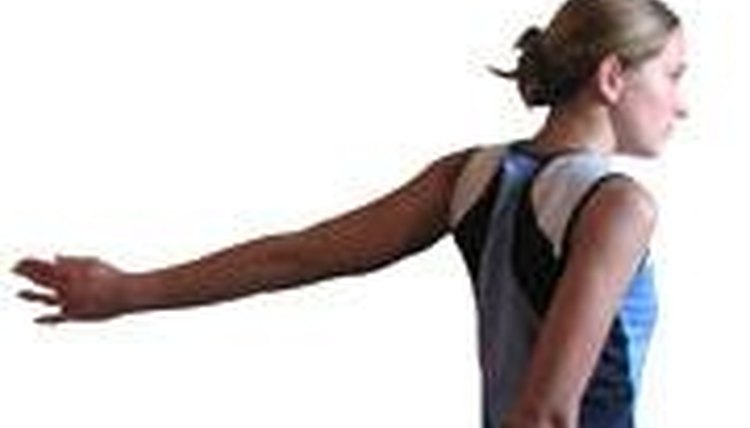
http://www.edupics.com/arm-muscles-t12897.jpg, http://www.gymaddix.com/wp-content/uploads/2009/04/weight-lifting-light-276x300.jpg
Prevent a torn arm muscle by stretching and not going beyond physical limits. Do not lift weights that are too heavy to use alone, and use slow, controlled movements when doing strength training exercises like bicep curls or tricep dips. Those who use erratic exercise movements are more at risk for suffering from an injury, especially if they do not stretch properly beforehand. Always stretch the arm muscles before and after strength training to reduce the risk of injury.
Considerations

http://www.edupics.com/arm-muscles-t12897.jpg, http://www.gymaddix.com/wp-content/uploads/2009/04/weight-lifting-light-276x300.jpg
Reduce the risk of injury by doing the following during each workout: Warm up and stretch thoroughly before any type of workout, stop at the onset of any pain or discomfort, take a day of rest between strength training sessions so the muscles have time to heal, and finally, use the proper amount of weight and try not to overdo it. By incorporating these suggestions into each workout, the risks of injury are substantially reduced. If any symptoms of a torn arm muscle are felt, stop immediately and seek medical attention.
